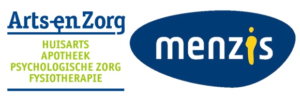The Menzis Shared Savings Program in cooperation with Arts en Zorg: increasing cost-effectiveness by introducing value-based physician incentives

Aim
Our VBHC initiative aims to improve cost-effectiveness by changing the GP payment structure into one that rewards achieving similar patient outcomes at a lower cost. These rewards need to be reinvested in care, such that we can create a sustainable path towards value-based health care delivery.
Background information
Only a few value-based incentives followed from the traditional GP payment system – which is a blend of capitation fees and fee-for-service payments. This is problematic, because Dutch GPs, like in other countries, fulfill a central and coordinating role in the health care system. They are gatekeepers to specialist services, they coordinate the provision of chronic care services, and are able to substitute some hospital services with primary care. Therefore, when value-based incentives are lacking at the GP level, this will have important consequences for value delivered in other parts of the health care spectrum.
In an attempt to complement the current GP payment system with value-based incentives, Menzis and Arts en Zorg jointly developed a shared savings program, together with Tilburg University (dpt. Tranzo). The development process was structured along five building blocks (figure below). Consensus was reached on all building blocks.
Setting
The Program’s main features are:
- GPs assume accountability for spending and quality, for all patients registered with them at the start of the year, for all services covered by the Dutch Health Insurance Act, except dental care;
- At the end of the performance year, all expenditure claims are summed, and are expressed as a per provider, per capita expenditure average. To limit the effect of expenditure outliers on provider averages, we cap individual patient expenditures at $25,000 (the 99th percentile of the spending distribution).
- The expenditure averages are evaluated against a spending benchmark. Each participating provider has its own benchmark, consisting of the provider’s own spending history, multiplied by the local growth trend in health care expenditures.
- In case the provider’s spending average is significantly lower than the benchmark (calculated using the basic principles of statistical testing), the provider has realized savings.
- The sharing rate depends on the provider’s performance with respect to a wide range of quality indicators, including patient satisfaction, chronic care delivery, prescription drug policy and safety.
- Savings have to be invested in health care.
The resulting program was implemented in 2014, in the city of Enschede, and covered 30,000 patients of which 15,000 were insured at Menzis. The program formally ended in 2017, after which a second version of the program became active. This second program has an intended duration of 5 years, and combines a prospective global payment (including GP services only) with a two-sided shared savings agreement covering total expenditures. The combination of both incentives is unique, and, from a theoretical perspective, provides very strong incentives for value-based health care delivery. In total, both programs cover over 100,000 patients.
Methods
The Program’s first year was evaluated using econometric specifications that relied on so-called difference-in-difference modeling. Two control groups were formed: (1) similar GP practices in the area surrounding the pilot, (2) patients in the city of Enschede, not enrolled with Arts en Zorg. We corrected for case mix differences between both groups, and differences in growth trends due to these differences in case mix.
Changes in quality were assessed using a before/after design, as data for the control group were not available.
Results
The main results are:
- The GPs participating in the Program lowered spending 3%;
- All GPs participating in the Program realized savings;
- Overall quality was not affected by the program;
- Spending reductions were primarily achieved by lowering volume;
- Significant spending reductions were observed in hospital care, diagnostic care and GP care
During the Program, Arts en Zorg started several interventions aimed at increasing value, among which were the development of online applications (increasing accessibility), electronic ‘nudges’ aimed at improving adherence to guidelines, integrated primary care pathways for chronic diseases, collaboration with dermatologists to reduce waiting lists, and creating cost-awareness by sharing expenditure data with participating GPs. Menzis assisted in this process.
Menzis and Arts en Zorg continue to collaborate on value-based payment reform.
